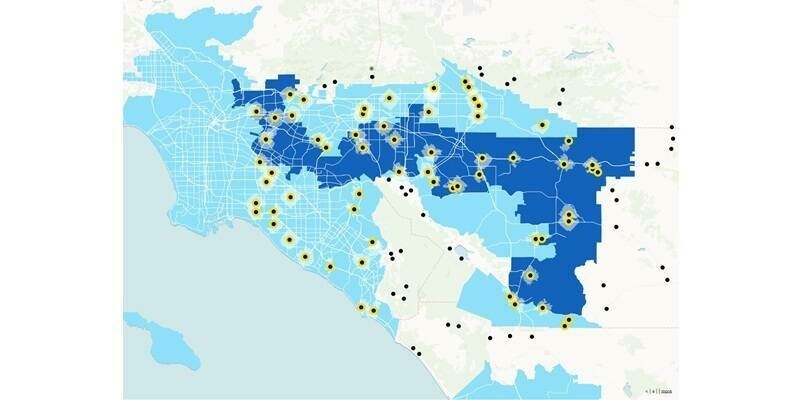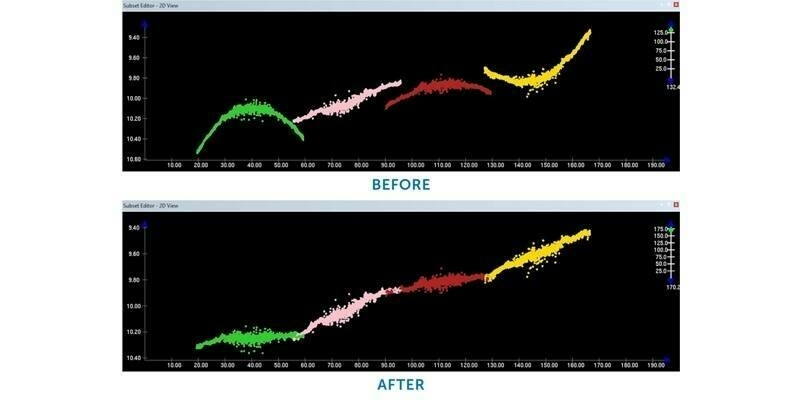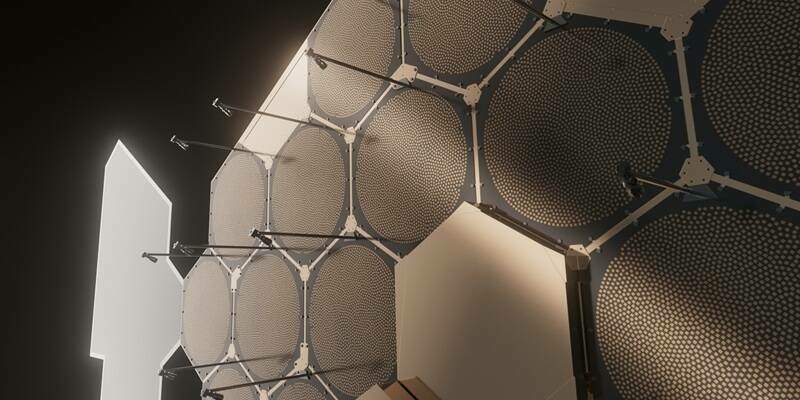In addition to supporting long-term studies of climates and environments, they provide rapid access to aerial overviews in the event of sudden floods, forest fires, and other natural disasters. Thanks to new developments in big data, cloud computing, and other areas, commercial applications and other products in many sectors of the economy are growing more and more proficient at handling huge quantities of information.
Monitoring Earth from the International Space Station (ISS)
The ISS, which circles our planet 16 times every day in low Earth orbit (LEO), presents an exciting complement to satellite data. Its flyover frequency opens the door to a range of intriguing opportunities for innovative services in commercial Earth observation.
Meanwhile, the instrument platform MUSES (Multiple User System for Earth Sensing) from Teledyne Brown was installed on the ISS in 2015. With a surface area of 85 by 85 centimetres, MUSES has space for up to four instruments, including high-resolution digital cameras, hyperspectral image sensors, and many other types of Earth observation equipment. The regular supply missions conducted to the ISS offer a reliable alternative to securing launch capacity, which is currently very much in demand. This makes it possible to switch out the instruments on the ISS when required and install ongoing technical innovations - an option not available with other satellites.
In combination with Copernicus data, this equipment facilitates the development of brand-new and tailored Earth observation services that were previously infeasible due to the cost of designing and launching a satellite with new instruments.
Canadian Startup Helps Produce World's First Selfie from Space
Canada's UrtheCast, the startup that won the T-Systems Challenge of the Copernicus Masters 2011, has been one of the pioneers in leveraging the commercial synergies between satellite data and the instruments on board the ISS. The company's own ultra-HD cameras have been installed on the ISS, where they see use in monitoring environmental protection efforts, humanitarian aid, social events, agriculture, and many other areas. The resulting high-resolution images and videos are also provided to developers along with analytical tools. Recently, UrtheCast announced its acquisition of the Earth observation business Deimos, which included the Deimos-1 and -2 satellites. For the premiere of the new James Bond film Spectre, Heineken® also used UrtheCast's cameras to take the world's first selfie from space as part of an advertising campaign.
Prizes await the best new business models for the combined use of data
The sixth edition of Copernicus Masters, the world's biggest international competition in the commercial use of Earth observation data, is now looking for outstanding ideas, applications, and business concepts that make use of such data in everyday life.
Renowned partners are sponsoring prizes in seven topic-specific challenges. Along with cash prizes, the winners will receive access to a leading international network, corresponding data, startup funding, and other support valued at more than EUR 300,000 in total. Visionary teams and individuals from the realms of business, research, and higher education now have the chance to write their own chapter of the Copernicus Masters success story.
Astrosat End-to-End EO Challenge
Scotland's Astrosat Ltd and its strategic partner, Teledyne Brown, have the unique opportunity to install new and innovative Earth observation sensors on the ISS's MUSES platform on a regular basis.
"In the Astrosat End-to-End EO Challenge, we're searching for exciting new applications for Earth observation services that are based on the use of custom sensors on the ISS in tandem with the datasets Copernicus provides," explains Steve Lee, founder and CEO of Astrosat. "We want to encourage participants to be as creative as possible while still submitting business models with a solid basis in reality. We're particularly interested in solutions designed to support disaster aid or the economic advancement of end users in developing countries in Asia."
Do you have an idea for a holistic solution based on the combination of sensors and Copernicus data?
Then register for the Astrosat End-to-End EO Challenge today. The winner will receive a tailored support package from Astrosat valued at EUR 8,000 and an expansive satellite data package worth EUR 10,000.
The submission phase will end on 18 July 2016.
AZO - an experienced organiser
AZO has been organising the Copernicus Masters competition on behalf of ESA since 2011. By leveraging its extensive experience as a specialist in building and maintaining global innovation networks and organising related competitions, AZO supports product innovations and the creation of new companies, particularly in the field of commercial aerospace applications.
Subscribe to our newsletter
Stay updated on the latest technology, innovation product arrivals and exciting offers to your inbox.
Newsletter

